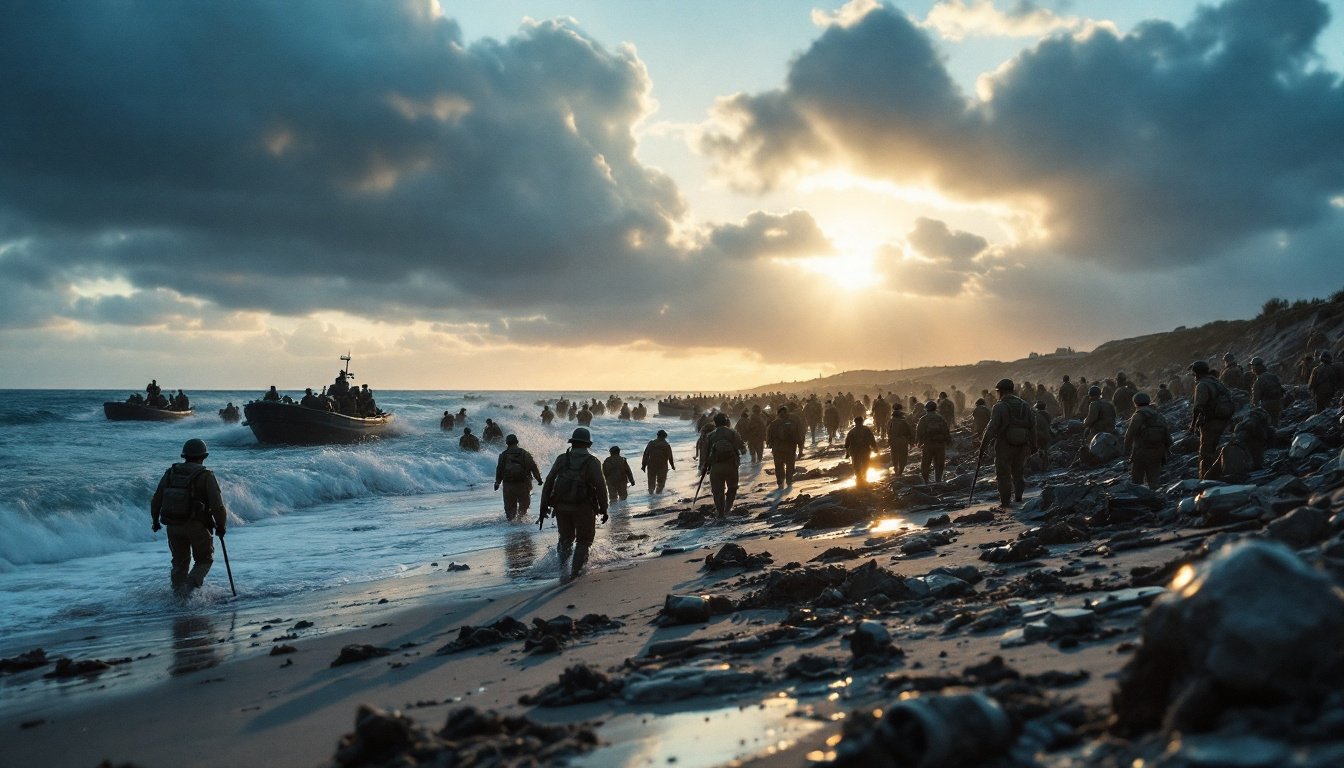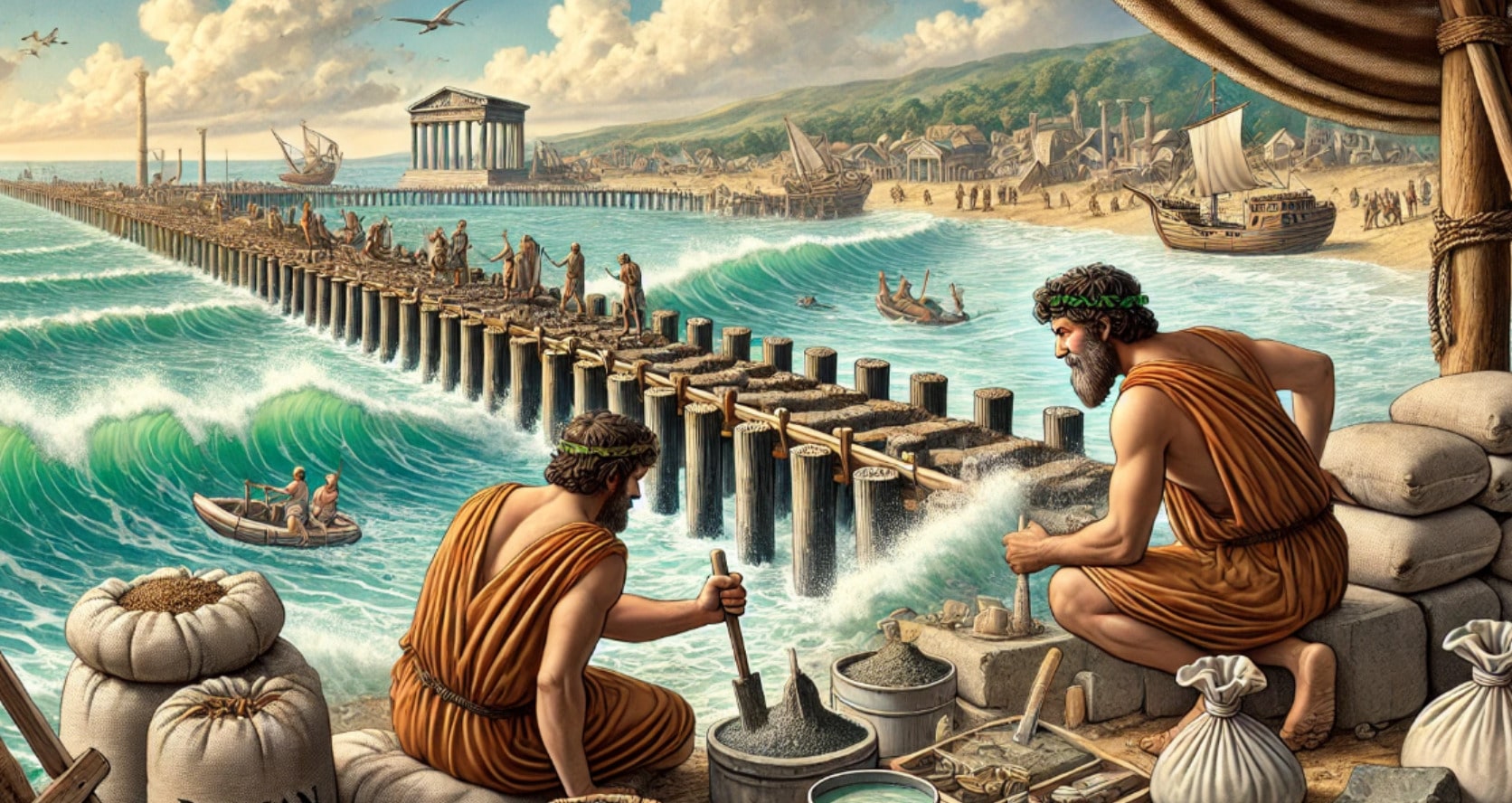Imagine being one of the soldiers on a boat, slowly approaching the beaches of Normandy. Around you, the sound of the waves and the murmurs of your comrades mix with the tension in the air. Cold and fear grip you, but so does a profound determination.
At that moment, you know you are about to take part in one of the most important battles in history, one that will define the future of Europe and the freedom of millions.
The Battle of Normandy: The Day That Changed the Course of History
On the morning of June 6, 1944, one of the most decisive and heroic events of World War II took place: D-Day. More than 156,000 Allied soldiers crossed the treacherous English Channel and landed on the beaches of Normandy, France, under enemy fire.
This risky operation marked the beginning of the end of the Nazi regime in Europe.
The Meticulous Planning Behind D-Day
D-Day was not just a show of courage on the battlefield; it was the result of months of exhaustive planning. Allied leaders, led by General Dwight D. Eisenhower, understood that to ensure success, they needed to carry out a coordinated operation that would confuse the enemy and allow them to enter European territory.
One of the main objectives was to mislead German forces about the landing site, and to achieve this, they created a deception strategy called “Operation Fortitude.” This led the German command to believe that the invasion would happen in Calais, France, thus diverting most of Hitler’s forces to that area.
The Unpredictable Weather: A Small Window of Opportunity
The waters of the English Channel are known for their unpredictability, and the night of June 5 was stormy. Strong winds and high waves threatened to destroy the fragile landing craft. However, meteorologists found a small window of good weather on June 6.
Although conditions were still harsh, Eisenhower gave the green light. It was risky, but delaying the operation meant losing the element of surprise.
Landing on the Beaches of Normandy
The Allied forces divided their landing across five beaches: Utah, Omaha, Gold, Juno, and Sword. Each beach presented unique challenges, from high cliffs to heavily fortified bunkers.
The soldiers who arrived in the first waves faced the worst scenario, as German forces, hidden and heavily armed, rained down fire on them.
The Story of James Doohan at Juno Beach
Among the soldiers who landed that day was James Doohan, a Canadian lieutenant assigned to Juno Beach. Doohan, who would later become famous as the engineer Scotty on “Star Trek,” led his men through the waters under intense German fire. During the battle, he was injured six times, including once in his right hand, resulting in the loss of a finger.
Despite his wounds, Doohan continued to fight and maintained control of his troops. His story of courage and resilience embodies the character of the soldiers who participated in D-Day.
Omaha Beach: Hell on the Sand
Omaha Beach was undoubtedly the bloodiest of the landings. The American soldiers faced fierce resistance. The German defenses were fortified with concrete bunkers, barbed wire, and mines, making it extremely difficult to advance.
During the first hours, it seemed the soldiers would never make it off the beach. However, after significant losses, some managed to push forward.
With the support of naval artillery, they gradually gained ground, breaking through German defenses.
The Crucial Role of Paratroopers
The night before D-Day, thousands of American and British paratroopers were dropped behind enemy lines on a highly risky mission.
Their objective was to secure bridges and strategic points, cutting off German supply routes and preventing reinforcements from reaching the beaches. Among them was the 101st Airborne Division, which landed near Sainte-Mère-Église, one of the first French towns to be liberated.
The paratroopers faced great difficulties, as many were scattered due to the wind and landed far from their assigned points, but they managed to regroup and accomplish their mission.
The Psychological Impact on the Soldiers
D-Day was not only a physical but also an emotional challenge for the soldiers. Many young men left their homes, families, and dreams, facing fear and the risk of not returning.
Stories of camaraderie and mutual support among soldiers, even among strangers, became legendary. On Omaha Beach, a group of soldiers took refuge behind a destroyed tank, encouraging each other to advance despite intense enemy fire.
That battlefield brotherhood became an indelible memory for those who survived.
The Allies’ First Advances and the German Retreat
As the day wore on, the Allies secured control of the beaches and pushed into the interior of Normandy. The German resistance weakened, especially as they were thrown off by the invasion in Normandy instead of Calais.
With each kilometer reclaimed, the Allies moved closer to Paris, finally liberating it on August 25, 1944. The German retreat and the Allied advance marked an irreversible shift in the war in Europe.
Conclusion: The Legacy of the Battle of Normandy
The Battle of Normandy was more than a military operation; it was a symbol of hope and determination for the world.
The soldiers who fought in Normandy left behind a legacy of courage and sacrifice that continues to inspire future generations.
Without their bravery, the history of Europe and the world might have been very different.



